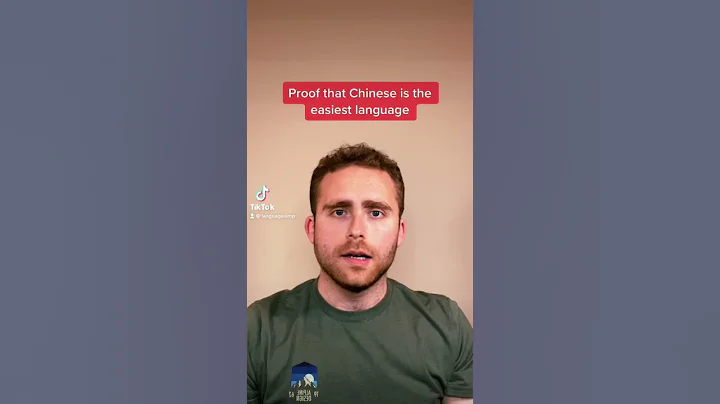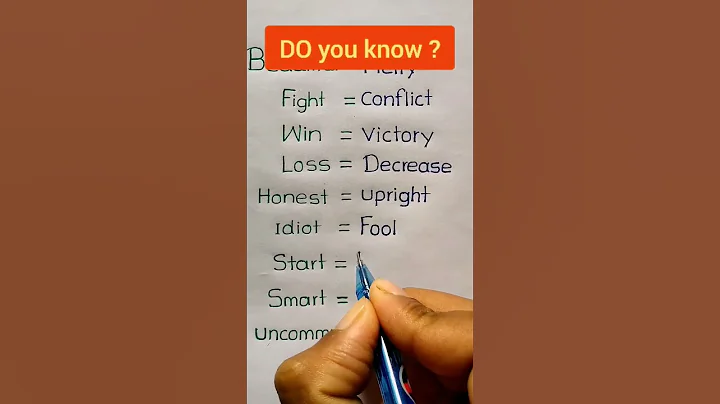5. Quantity rules
![5. Quantity Law Quantity Law Mind Map (I) Number of faces 1. What is a face? White closed area 2. When to count the faces? (1) The figure is divided and the closed surfaces are obvious (2) Life-like figures, thick line figures 3. [Note] All faces: Focus on triangles and quadrilat - DayDayNews](https://cdn-dd.lujuba.top/img/loading.gif)
Quantity rules mind map
(I) Number of faces
1. What is face? White closed area
2. When to count the faces?
(1) The graph is divided, the closed surface is obvious
(2) Life-like graphics, thick line graphics
3, [Note] All faces of : Focus on triangles and quadrilaterals.
(Two) Number of lines
1. [Note] Graphic features: single straight line, priority is given to number straight lines.
2. [Note] graphical characteristics: single curve/line-priority curve.
3. Special test points for lines: number of strokes
(1) What is one stroke ? The figures that can be drawn in one stroke when they cannot be repeated.
(2) How to determine a stroke?
A, lines are connected to
B, The number of singularities is 0 or 2 (singularity: emits odd lines with one point as the center)
[Note] The endpoint is also a singularity, don't forget to count!
4. Multiple strokes: number of strokes = number of singularities/2 (the number of singularities must be even numbers)
5. Common feature maps of strokes
Five-pointed star, "day", "field", circle tangent/intersection and deformation diagram, obvious endpoints appear.
[Note] Multi-endpoint, "Day" character deformation - priority number of strokes.
[Note] Multiple endpoints and circles intersect - priority number of strokes.
(three) Number of points
1. What are points? The intersection point between lines
Note: tangent point also belongs to the intersection point
2. When to count the points?
point quantity feature map: obvious crossing of lines (big tree branches), and more tangents.
[Note] The lines cross clearly - the number of strokes/intersection points.
3. Refinement method of points
(1), tangent point: When there are more tangents, consider
(2), curved and straight intersection point: curved and straight intersection point
[Note] obvious tangent - several strokes/intersection point.
The overall number intersection point is irregular and obvious tangent to each other - tangent point.
(four) Number of angles
1. What is angle? (0°<angle<180°)
2. How to test the angle?
(1) Number of all angles
(2) Refine method: only count right angle numbers/acute angle numbers
Right angle feature map: cross cross, T-shaped, right triangle, obvious transformation figure
acute angle feature map: fold line, fan shape, transformation figure
[Note] There is a transformation diagram in , consider the number of right angles.
(Five) Quantity of
1. What is 食: multiple independent small graphics.
2. Small elements appear, what is the idea of doing the questions?
(1) Prioritize the types and numbers of elements
(2) Can't choose the only answer, consider finding the same
[Note] number of elements: relatively simple, with obvious graphic characteristics. Multiple independent small figures and small elements appear, such as four-pointed stars, small circles, small hearts, small moons, and small five-pointed stars, considering the number of elements.
3. Special test points of the ci: part number
(1) What is part number? Joining together means part
(2) When should we consider part number? Lifelike, thick line graphics
[Note] Common test methods for lifelike, thick line graphics
attributes (symmetry, opening and closing), part number, surface
(VI) Summary
![5. Quantity Law Quantity Law Mind Map (I) Number of faces 1. What is a face? White closed area 2. When to count the faces? (1) The figure is divided and the closed surfaces are obvious (2) Life-like figures, thick line figures 3. [Note] All faces: Focus on triangles and quadrilat - DayDayNews](https://cdn-dd.lujuba.top/img/loading.gif)
Quantity law feature map summary
[Note] Quantity law feature map summary: Understanding the quantity law is a simple thing, but it is very difficult to understand from understanding to doing the questions. Because the quantitative rules, especially areas, points, lines, and angles are difficult to distinguish, if they are disrupted, you don’t know what to test, and you must locate the test points according to the characteristics of the graphic.
1. The graphics are divided and the closed surfaces are obvious, so the number of surfaces is given priority.
2. The lines are obviously crossing, and there are generally characteristic diagrams of stroke numbers, such as five-pointed stars, circle tangent/intersection, deformation of the character "day", deformation of the character "field", and multiple endpoints. The number of strokes is given priority; if the number of strokes is not regular, consider the intersection of the number, and these two test points should be combined together to remember.
3. If a single straight line appears, the number straight line is given priority; if a single curve appears, the number curve is given priority.
4. Remodeled diagrams and right angles appear, and priority is given to the number of right angles.
5. Multiple independent small figures appear, and priority is given to the types and numbers of elements; life-like and thick line figures appear, and the number of parts, attributes (symmetry, opening and closing), and surfaces can be considered.
6. Everyone knows the characters in the table, but graphic reasoning is useless to recognize words. To recognize pictures, you need to connect words with pictures, and rely on writing questions. After class, you should do the example questions again, match the test points according to the feature map, and you can do it slowly during practice. Now there is no time required. Analyze which feature map each map is. For example, if you encounter multiple endpoints, deformation of the character "day" and deformation of the character "field", the number of strokes is given priority. Now you can do 1 question in 2 or 3 minutes, and slowly match the feature map with the text. If there are too many matches, you will feel the answer when you do the questions.
6. Space reconstruction
![5. Quantity Law Quantity Law Mind Map (I) Number of faces 1. What is a face? White closed area 2. When to count the faces? (1) The figure is divided and the closed surfaces are obvious (2) Life-like figures, thick line figures 3. [Note] All faces: Focus on triangles and quadrilat - DayDayNews](https://cdn-dd.lujuba.top/img/loading.gif)
Space reconstruction mind map
[Note] If you rely on imagination, pay attention to the folding direction; if you rely on skills, all skills will eliminate the wrong options.
(I) Relative face
1. Application: An option that appears at the same time in a group of opposite faces - exclude
2. Expand how to judge the opposite face in the figure:
(1) One side or column is separated by one face
(2) Both ends of the Z shape (the face next to the middle line of the Z character)
[Note]
(1) Be careful not to ignore the questioning method. In the 2022 national examination, a special questioning method was found. Which picture is different from others is asked, be careful.
(2) The probability of directly selecting the answers with the opposite side in the national examination is not high. Generally, there are 1-2 options that can be excluded by the opposite side, and the remaining options can be seen in the adjacent side.
(II) Adjacent face - public edge
1. How to determine the common edge:
(1) The two sides forming a right angle in the plan view are the same edge.
(2) There are 4 sides in a row, and the two sides at both ends are the same side.
2. Features of adjacent surfaces: adjacent relationships before and after folding unchanged
method - relative position method (the graphical direction is obvious)
[Note] relative position method: If you can find a graph with obvious direction during the process of doing the questions, such as the "point" of arrows and triangles, they can point up, down, left and right, and you can look at the relative position to do the questions.
(Three) Adjacent faces - common point
1. How to determine common point: The common point of the adjacent three faces is the only
[Note] Three faces are next to each other - priority public point
The three faces are not next to each other - priority public edges
(IV) Adjacent faces - edge drawing method
1. Combining the options, find a unique point or unique edge of a special face
2. Stroke the marker clockwise (scan the same face)
3. The question stem and the corresponding faces of the option are inconsistent - exclude
[Note] edge drawing method: If you think it is not easy to use to look at public edges and public points, you can also use the edge drawing method. It is relatively troublesome to learn the edge drawing method, but after learning it, it is a more practical method.
(V) Hexahedral summary
![5. Quantity Law Quantity Law Mind Map (I) Number of faces 1. What is a face? White closed area 2. When to count the faces? (1) The figure is divided and the closed surfaces are obvious (2) Life-like figures, thick line figures 3. [Note] All faces: Focus on triangles and quadrilat - DayDayNews](https://cdn-dd.lujuba.top/img/loading.gif)
Hexahedral summary
[Note]
1. If the opposite faces appear at the same time, you must exclude them. The two methods to find the opposite faces must be understood.
2. Adjacent face: You must know how to find public edges.
(1) The two sides that form a right angle are common edges.
(2) If the four sides are connected together, the two sides at both ends are public edges. Most of the national examinations examined this form. In the past, four sides were connected together for more than ten consecutive years. It is more important and must be mastered.
3. Drawing edge method: You must learn it. Simple questions can be solved by using public edges and public points, and difficult questions can be solved by using the drawing edge method. If you cannot find the unique point, you can find the unique edge.
7. Graphic reasoning summary
elements have the same composition - position (translation, rotation, flip)
elements have the same composition - style (traversal, addition and subtraction, similarities and differences, black and white operations)
elements have the same composition - attributes first (symmetry, curved straightness, opening and closing)
— quantity (points, lines, angles, surfaces, and element)
special rules - functional elements
— relationship between graphics (disconnection, intersection)
space class - opposite faces, adjacent faces (public edges, common points, drawing edge method)
[Note]
1. Examination frequency: National examination high probability position test 1 question, style test 1 question, attribute test 1 question, quantity test 3 Question 1 test for left and right and special rules (functional elements, relationship between graphics) and hexahedral test 1 test. The remaining 2 questions are cross-sectional drawings of space, three-dimensional stapling, etc.
2, graphic features of points, lines, corners, surfaces, and plains should be remembered. The closed figure appears in
(1), and the number of faces is given priority.
(2) A single straight line appears, and the number straight line is given priority; a single curve appears, and the number curve is given priority.
(3) There are multiple endpoints, etc., so the number of strokes is given priority; if the number of strokes is not regular, consider the number intersection point. If the intersection point is not good, you can also look at the tangent point and the curved and straight intersection point. The modified diagram appears in
(4), which is easy to test the numerical angle, mainly right angles.
3. The test frequency of the face is relatively high, and the detailed test points of the face are all faces, the same face, the largest face/minimum face.
(1) All faces: like a triangle face.
(2) Same side: "Twins" side.
(3) Maximum face/minimum face: shape, attributes (symmetry, curved straight), and relationship with the outer frame.











